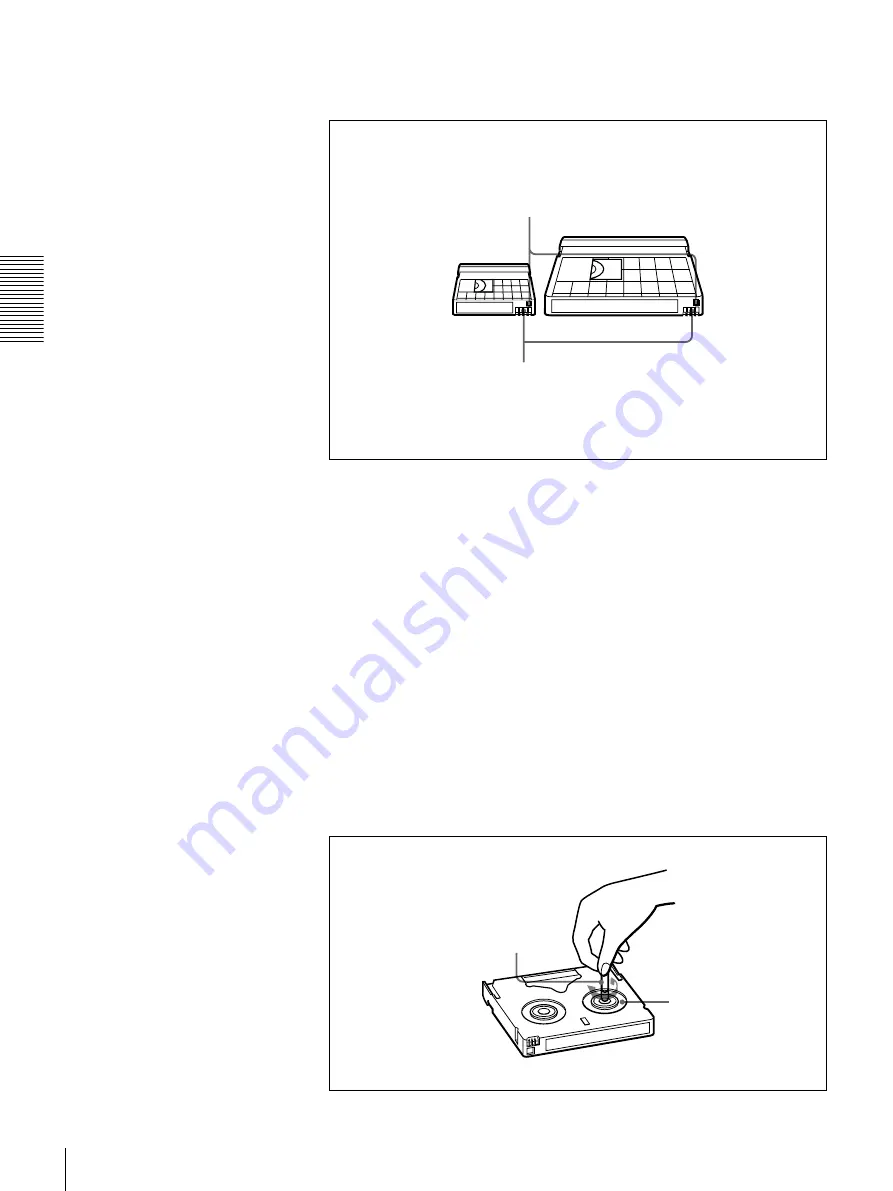
24
Usable Cassettes
C
h
apt
er 2
Rec
o
rding
a
nd Pla
y
bac
k
DVCAM cassettes
The following figure illustrates the DVCAM cassettes.
Notes on using cassettes
• Before storing the cassette for a long period of time, rewind the tape to the
beginning and be sure to put the cassette in its storage case, preferably on end
instead of flat on its side.
Storing a cassette in any other condition (not rewound, out of its case, etc.)
may cause the video and audio contents to become damaged over time.
• If the cassette memory connector (contact point) becomes dirty, connection
problems may occur, causing a loss of functions. Remove away any dust or
dirt from this area before using the cassette.
• If the cassette is dropped on the floor or otherwise receives a hard impact, the
tape may become slackened and may not record and/or play back correctly.
For information about how to check the tape for slack, see the next section.
Checking the tape for slack
Using a paper clip or a similar object, turn the reel gently in the direction shown
by the arrow. If the reel does not move, there is no slack. Insert the cassette into
the cassette compartment, and after about 10 seconds take it out.
REC/SAVE switch
For details of this switch, see “Preventing accidental
erasure” on page 25.
Mini size
Standard size
Cassette memory
This memory is used to store ClipLink log data.
For details of ClipLink log data, see the appendix
“ClipLink Guide” (page 105).
Paper clip, etc.
Reel
Summary of Contents for DVCAM DSR-1500
Page 22: ...22 Location and Function of Parts Chapter 1 Overview ...
Page 78: ...78 Displaying Supplementary Status Information Chapter 4 Menu Settings ...
Page 112: ...112 Glossary Appendixes ...
Page 116: ...116 Index Index ...
Page 117: ......
Page 118: ......
Page 119: ......
Page 120: ...Sony Corporation Printed in Japan ...






























